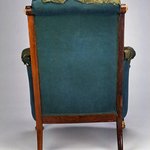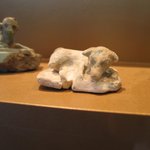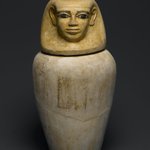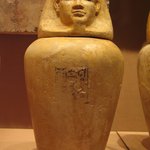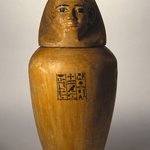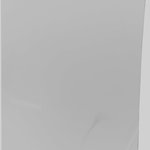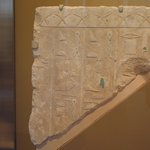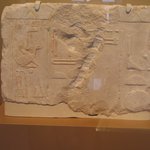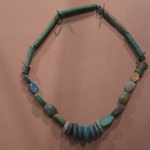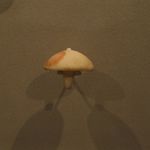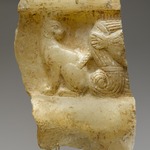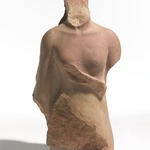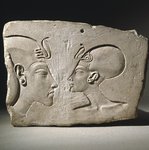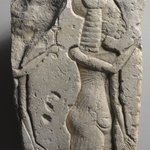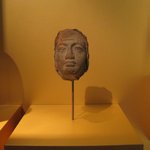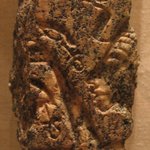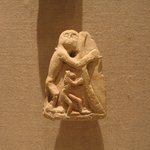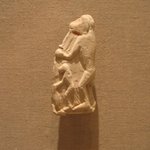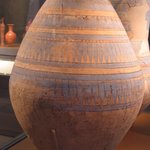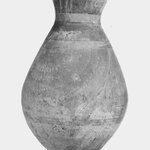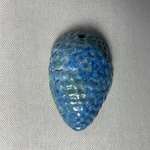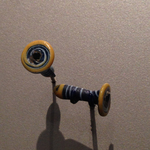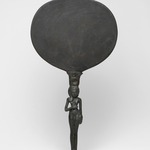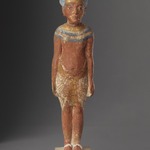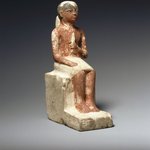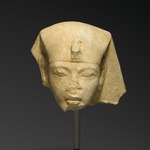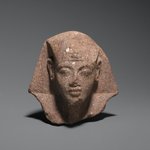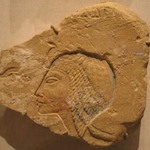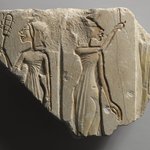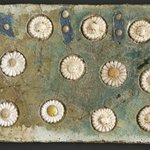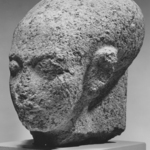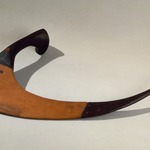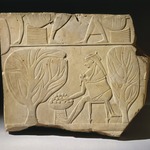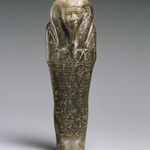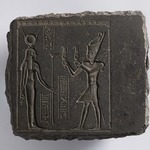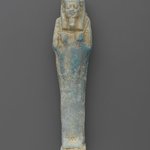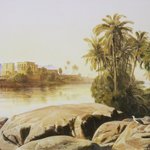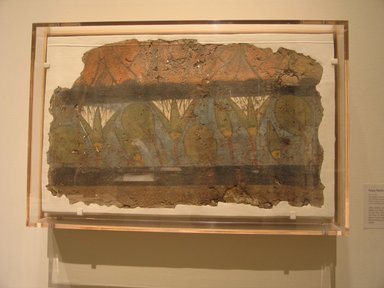
Palace Painting
Egyptian, Classical, Ancient Near Eastern Art
On View: Amarna Period, Martha A. and Robert S. Rubin Gallery, 3rd Floor
Unlike temples, constructed of stone to last forever, Egyptian places were made of mud brick, and each was probably used for no more than a generation or two. Artists covered palace walls with layers of plaster on which they painted idyllic scenes of palace activities and life along the Nile. This detail shows lotus buds and flowers; it may represent the edge of a pool in a palace garden.
MEDIUM
Mud, pigment
DATES
ca. 1352–1336 B.C.E.
DYNASTY
late Dynasty 18
PERIOD
New Kingdom, Amarna Period
DIMENSIONS
15 3/4 x 25 1/2 x 1 1/2 in. (40 x 64.8 x 3.8 cm) (show scale)



COLLECTIONS
Egyptian, Classical, Ancient Near Eastern Art
ACCESSION NUMBER
27.35
CREDIT LINE
Gift of the Egypt Exploration Society
PROVENANCE
Womens’ Quarter at the North Palace at Tell el-Amarna, Egypt; 1926-27, excavated by a team led by Henri Frankfort for the Egypt Exploration Society; 1927, gift of the Egypt Exploration Society to the Brooklyn Museum.
Provenance FAQ
CATALOGUE DESCRIPTION
Large fragment of fresco with two registers of lotus design, probably forming the lower border of a large wall composition.
The fresco is a good though not important example of the type of decoration used in the houses at Amarna. The upper register is orange-red with black outlines. The divisions between registers are black; the lower and more complete register has a blue background with flowers in green and white, black outline. The preserved portion is in fragile condition and is apparently extremely thin. The surface has flaked considerably and apparently much of the blue background has been lost.
EXHIBITIONS
MUSEUM LOCATION
This item is on view in Amarna Period, Martha A. and Robert S. Rubin Gallery, 3rd Floor
CAPTION
Palace Painting, ca. 1352–1336 B.C.E. Mud, pigment, 15 3/4 x 25 1/2 x 1 1/2 in. (40 x 64.8 x 3.8 cm). Brooklyn Museum, Gift of the Egypt Exploration Society, 27.35. Creative Commons-BY (Photo: Brooklyn Museum, CUR.27.35_wwg7.jpg)
IMAGE
installation, West Wing gallery 7 installation, CUR.27.35_wwg7.jpg. Brooklyn Museum photograph, 2005
"CUR" at the beginning of an image file name means that the image was created by a curatorial staff member. These study images may be digital point-and-shoot photographs, when we don\'t yet have high-quality studio photography, or they may be scans of older negatives, slides, or photographic prints, providing historical documentation of the object.
RIGHTS STATEMENT
Creative Commons-BY
You may download and use Brooklyn Museum images of this three-dimensional work in accordance with a Creative Commons license. Fair use, as understood under the United States Copyright Act, may also apply.
Please include caption information from this page and credit the Brooklyn Museum. If you need a high resolution file, please fill out our online application form (charges apply).
For further information about copyright, we recommend resources at the United States Library of Congress, Cornell University, Copyright and Cultural Institutions: Guidelines for U.S. Libraries, Archives, and Museums, and Copyright Watch.
For more information about the Museum's rights project, including how rights types are assigned, please see our blog posts on copyright.
If you have any information regarding this work and rights to it, please contact copyright@brooklynmuseum.org.
RECORD COMPLETENESS
Not every record you will find here is complete. More information is available for some works than for others, and some entries have been updated more recently. Records are frequently reviewed and revised, and we welcome any additional information you might have.
